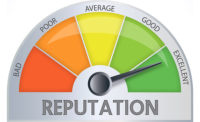Have you ever had someone stick his or her head into your office and proclaim, “We need some work.” All too often, we find ourselves in situations we really don’t want to be in. We’ve all dealt with people who are depending on you for paychecks, overhead that just won’t go away, and no work to provide the income. Yikes. There is no way to snap your fingers, say some magic words, or make a quick phone call to produce profitable work for the next day. Whenever you find yourself in a situation like that, you know all too well that the time to be doing something about it was about six months to a year ago. It’s not a good feeling.
There are stop-gap measures we can take when we have good, loyal team members with no real work to do. Of course, there’s stuff to do around the shop — projects and cleaning we’ve been neglecting for a long time often produces busy work for a short time. This is also a great time to catch up on some needed training that usually goes by the wayside. In our company, we have a list of projects that are waiting to be done around the office or shop. Remodeling, painting, and electrical work can be done by our own people much cheaper than hiring an outside firm. In addition, we have a whole library of training DVDs ready to go and a list of training each person will be needing, should the opportunity arise. While we do have a formal training program here that takes place in the fall and late winter, we always seem to have additional training or reviews that need to be done. Of course, none of these measures meet the need for income that is required to keep the doors open and the lights on in the company on a daily basis, so it’s good to be prepared for an emergency but much better to prevent it.
Am I suggesting we find a way to predict the future? Actually, yes, but I’m certainly not suggesting astrology, tarot cards, magic balls, etc. The method I’m suggesting is commonly known as “environmental scanning,” which is a means of examination and study of the environment of a business unit in order to identify its survival and prosperity chances. Environmental scanning means observing the external and internal business environment and understanding its implications for business opportunities. It also involves knowing beforehand the risks and uncertainties as well as threats to the business unit. Environmental scanning is acquiring information and gathering intelligence. You can use it to forecast and identify opportunities and build a strategy for the future.
The first thing you are looking for is changes in your climate. They consist of political, legal, economic, social, cultural, and technological process. What are the results of the recent political elections, and how will our customer’s reactions, buying habits, and attitudes change? What effect is the turbulent economy having on how our customers are spending money? Are you equipping and training your people for the new technological changes that are occurring on a daily basis? These and many more questions and issues will affect your success in the marketplace.
How about the structure of the market and the nature of your competition? The internet; utilities; big-box stores; and a host of companies, like Google and Amazon, are inserting themselves into our industry at an alarming rate. What are you doing to position yourself and your company to compete and set yourself apart?
Our customers are changing. They have needs and behavior patterns that are vastly different than before. We need to change the way we do business to meet these needs. Are you considering 24-hour service at regular rates? Do you have someone answering the phone 24/7 with the ability to schedule services and solve problems? Are you seeking better ways to contact your customers, such as texting, email, etc. Have you considered eliminating paper from your company? At our company, we are well on our way to being completely paperless. Our field personnel are on iPads, and all of our system installation proposals are electronic and allow customers to sign a touchscreen with one finger. We have a system that allows customers to sign contracts over the internet. How can you expect a customer to buy-in to new technology when you are presenting it with old technology?
Finally, you need to consider the products you sell and how you are differentiating yourself to fight the threat of invasion from imitation and substitute products. Are you simply going out there and replacing furnaces and condensing units with later and greater models, or are you positioning yourself in the marketplace as the tip of the spear? I know of many contractors that shy away from variable-speed technology because they don’t want to deal with the resulting changes needed in duct design and configuration. Talk about having your head in the sand. Our customers are demanding that their systems deliver the ultimate in comfort and efficiency. If you are not doing the research and obtaining the proper training to supply these needs, someone else will, for sure. Another incredible opportunity is in home automation. We are all aware there are many players out there trying to own the wall/thermostat, because it’s the key element in controlling the home. We own it now, and I think it would be a huge mistake to step aside and let another industry push us out.
We certainly need to pull out all the stops to make sure our companies have consistent and profitable work. But the time to act is now — not when we have people standing in our door at 3:30 p.m. wondering what they are going to do in the morning.
Publication date: 11/21/2016
Want more HVAC industry news and information? Join The NEWS on Facebook, Twitter, and LinkedIn today!









Report Abusive Comment